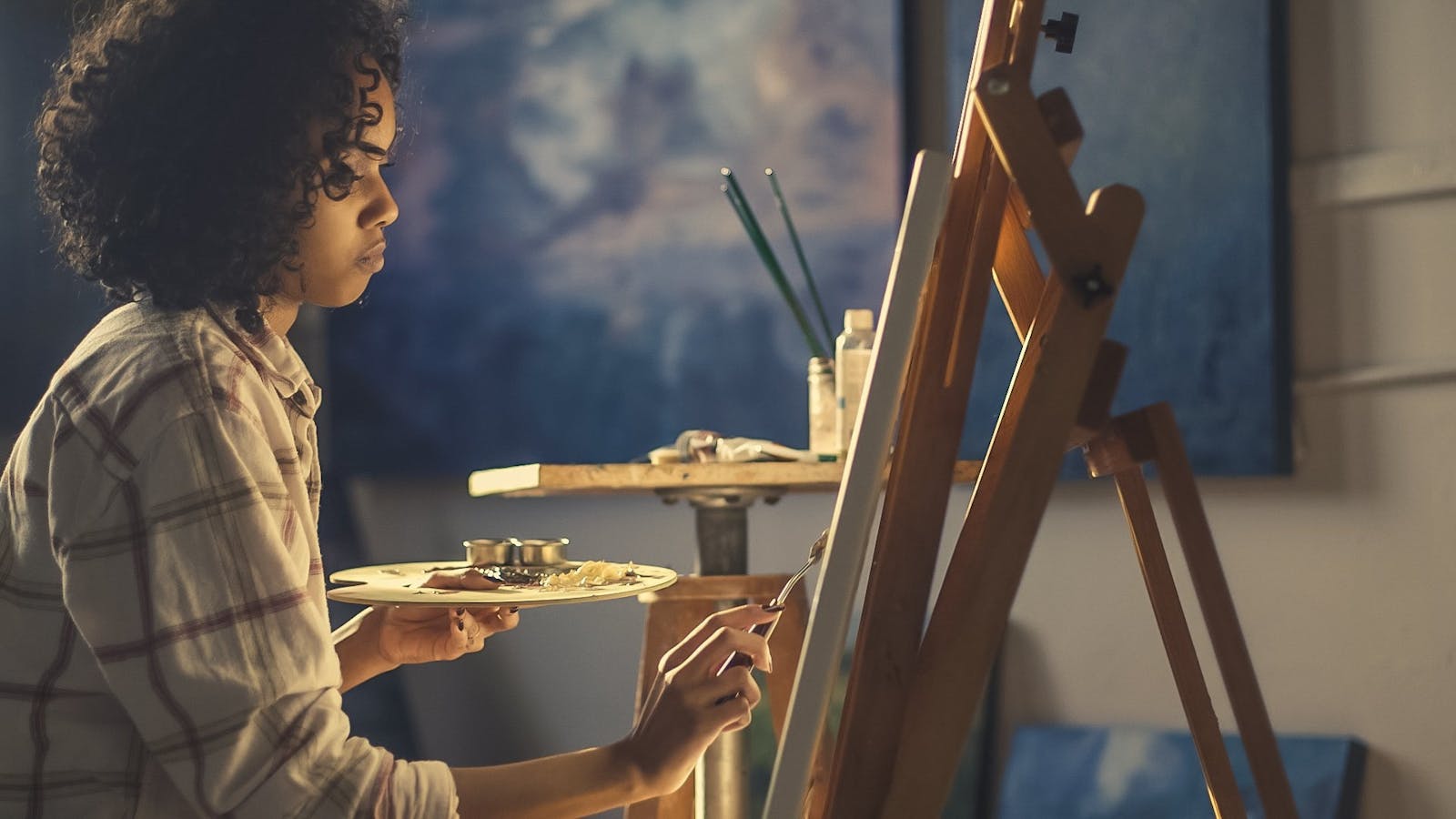Human beings seem boundless in their creativity. We see this creativity throughout human history. Is this something unique to our species?
Other animals can certainly be creative. Spiders weave webs. Birds build nests. Yet, the human knack to reflect on the world and communicate with one another has allowed us to accumulate ideas and build upon our innovations.
Our social connections amplify our imagination. This allows us to produce art and technology unmatched by other animals.
“Yes! We affirm it and we shall proclaim it from the mountaintops, that all people—be they black or white, be they brown or yellow, be they rich or poor, be they wise or fools, are created in the image of the Creator and are his children!”
Nelson Mandela, Speech at Zionist Christian Church, 1992
Storytelling is distinctly human. As researchers today suggest, our unique ability to recall information and communicate symbolically allows us to share history through narratives and rituals. This shared knowledge of the past helps to shape the languages, traditions, and customs of communities, generation after generation.
The Bible is full of narratives that help people remember their history and identity. God instructed the Israelites to remember their bondage in Egypt. Jesus said to his disciples, “Do this in remembrance of me.”
Is art unique to humans?
From cave paintings to modern sculptures, human beings have long been driven to express themselves through art. And no other animal can produce art as humans do to convey the same type of stories, emotions, and objects that human art communicates using shapes, colors, and geometrical designs.
As with written and spoken language, art expresses a human need to connect with one another. It both reflects and shapes the communities that produce it. In doing so, art has helped humans share culture and expand collective knowledge across generations.
Humans are not the only creatures to use tools. Crows, dolphins, and other animals use and modify objects they find around them to help with daily tasks.
Yet human technology is in a class of its own. Our ability to share and accumulate knowledge allows us to build on previous innovations, producing ever more complex tools and structures through generations of inventing, experimenting, and refining.
Today, we devise technologies that vastly extend our knowledge of our universe and ourselves.
Storytelling is distinctly human. As researchers today suggest, our unique ability to recall information and communicate symbolically allows us to share history through narratives and rituals. This shared knowledge of the past helps to shape the languages, traditions, and customs of communities, generation after generation.
The Bible is full of narratives that help people remember their history and identity. God instructed the Israelites to remember their bondage in Egypt. Jesus said to his disciples, “Do this in remembrance of me.”
Is art unique to humans?
From cave paintings to modern sculptures, human beings have long been driven to express themselves through art. And no other animal can produce art as humans do to convey the same type of stories, emotions, and objects that human art communicates using shapes, colors, and geometrical designs.
As with written and spoken language, art expresses a human need to connect with one another. It both reflects and shapes the communities that produce it. In doing so, art has helped humans share culture and expand collective knowledge across generations.
Humans are not the only creatures to use tools. Crows, dolphins, and other animals use and modify objects they find around them to help with daily tasks.
Yet human technology is in a class of its own. Our ability to share and accumulate knowledge allows us to build on previous innovations, producing ever more complex tools and structures through generations of inventing, experimenting, and refining.
Today, we devise technologies that vastly extend our knowledge of our universe and ourselves.
Storytelling is distinctly human. As researchers today suggest, our unique ability to recall information and communicate symbolically allows us to share history through narratives and rituals. This shared knowledge of the past helps to shape the languages, traditions, and customs of communities, generation after generation.
The Bible is full of narratives that help people remember their history and identity. God instructed the Israelites to remember their bondage in Egypt. Jesus said to his disciples, “Do this in remembrance of me.”
Is art unique to humans?
From cave paintings to modern sculptures, human beings have long been driven to express themselves through art. And no other animal can produce art as humans do to convey the same type of stories, emotions, and objects that human art communicates using shapes, colors, and geometrical designs.
As with written and spoken language, art expresses a human need to connect with one another. It both reflects and shapes the communities that produce it. In doing so, art has helped humans share culture and expand collective knowledge across generations.
Humans are not the only creatures to use tools. Crows, dolphins, and other animals use and modify objects they find around them to help with daily tasks.
Yet human technology is in a class of its own. Our ability to share and accumulate knowledge allows us to build on previous innovations, producing ever more complex tools and structures through generations of inventing, experimenting, and refining.
Today, we devise technologies that vastly extend our knowledge of our universe and ourselves.













